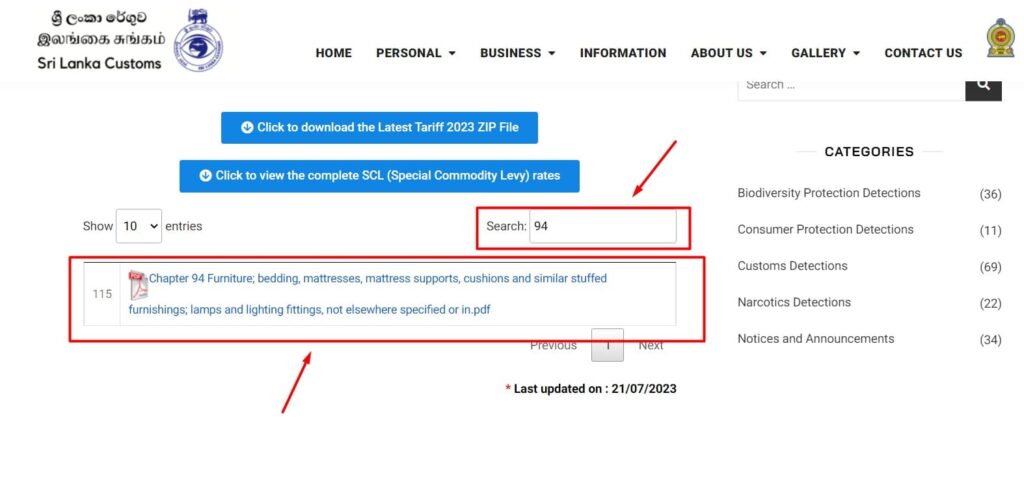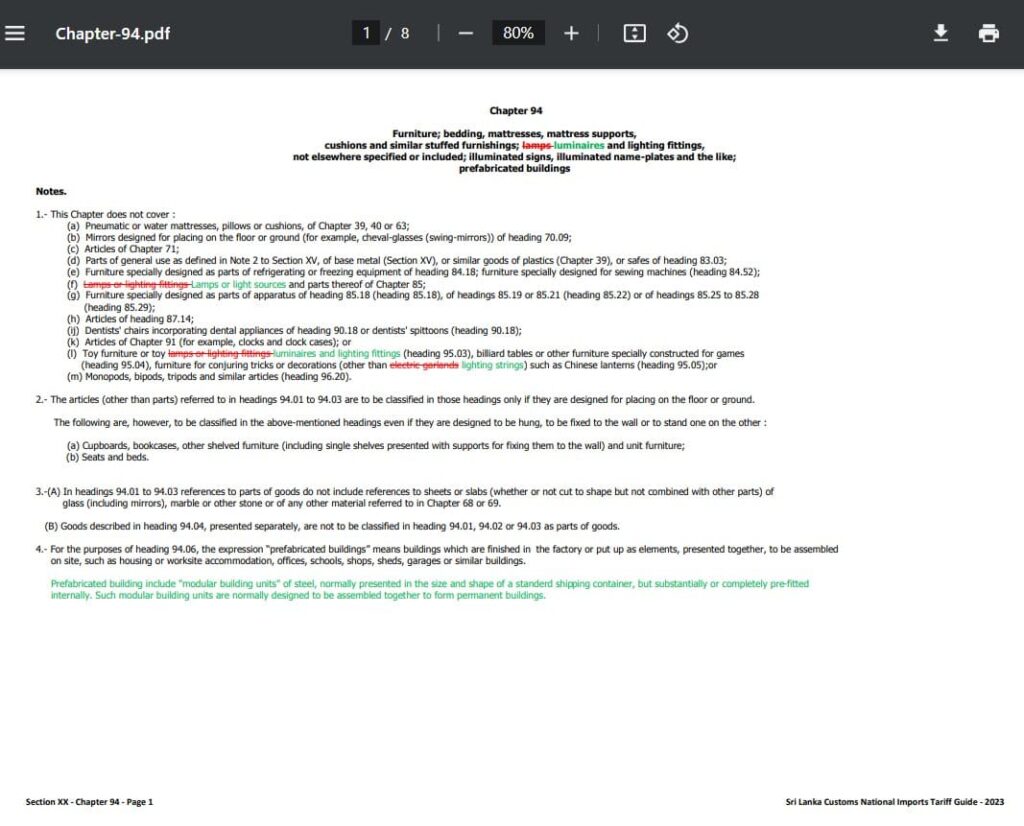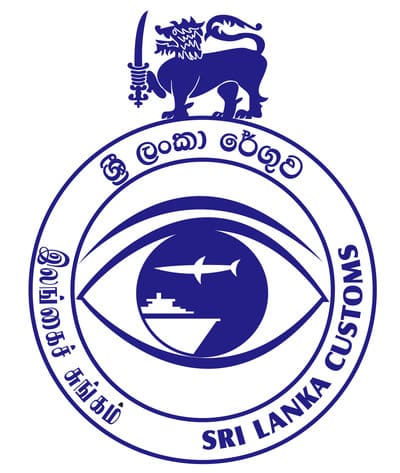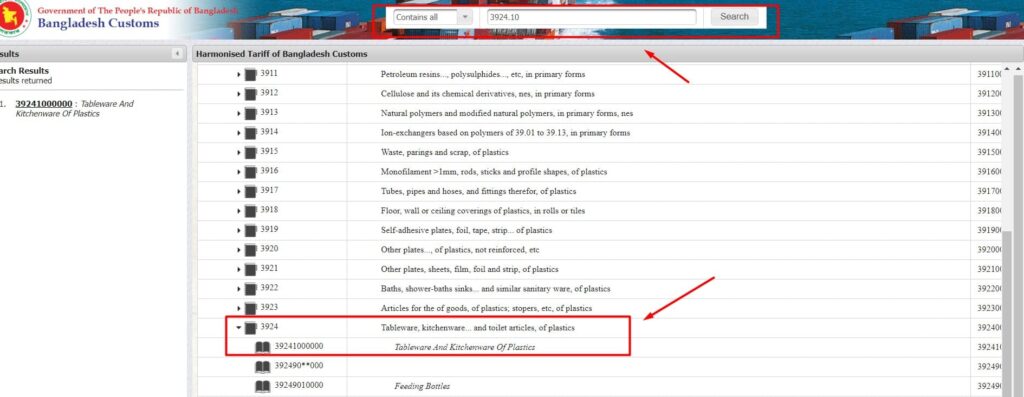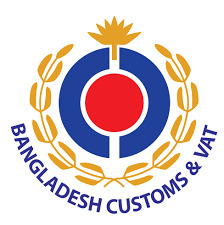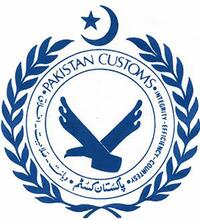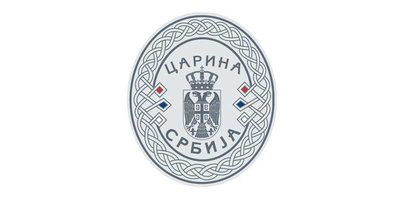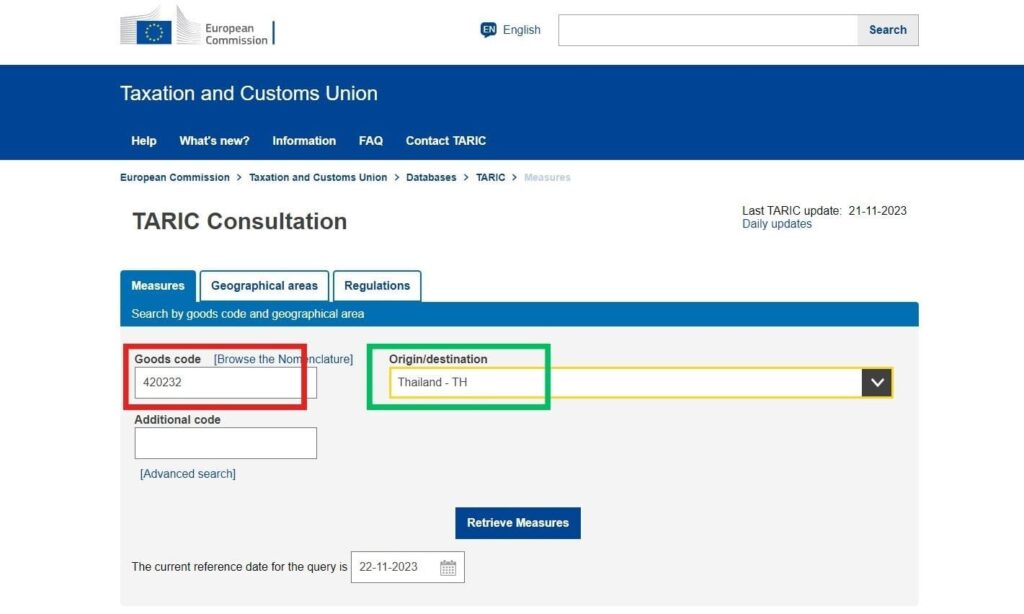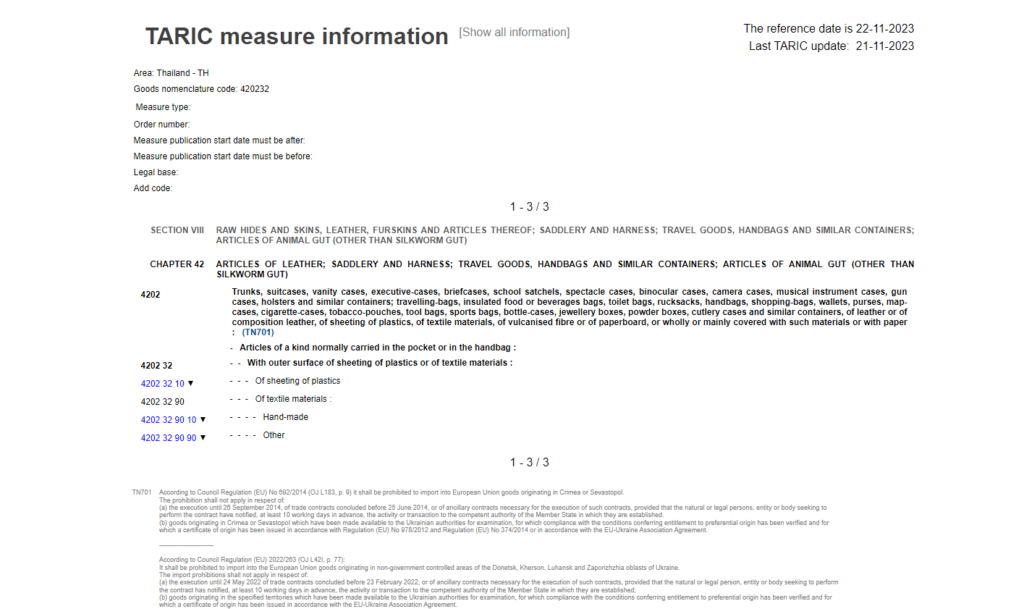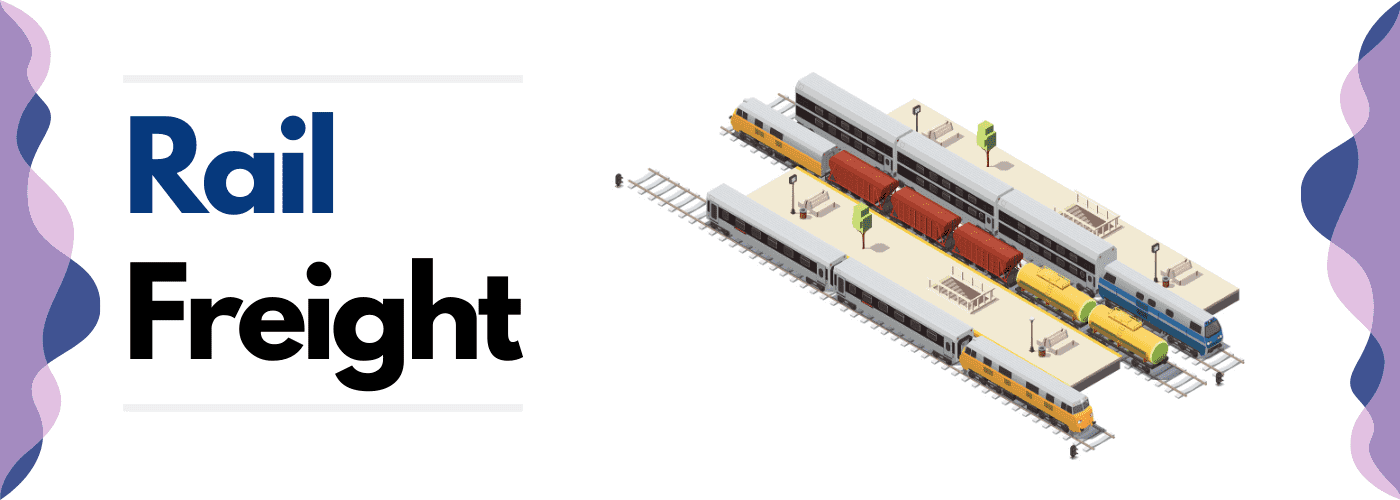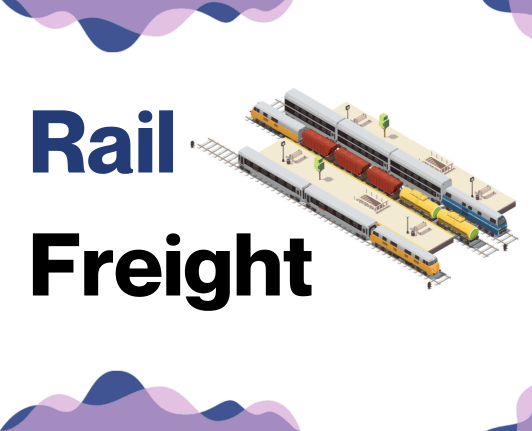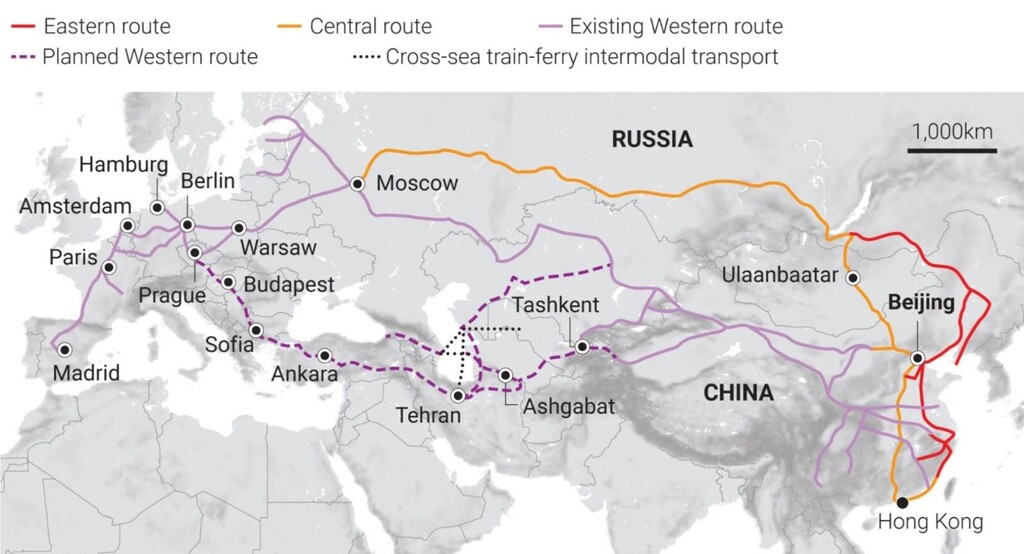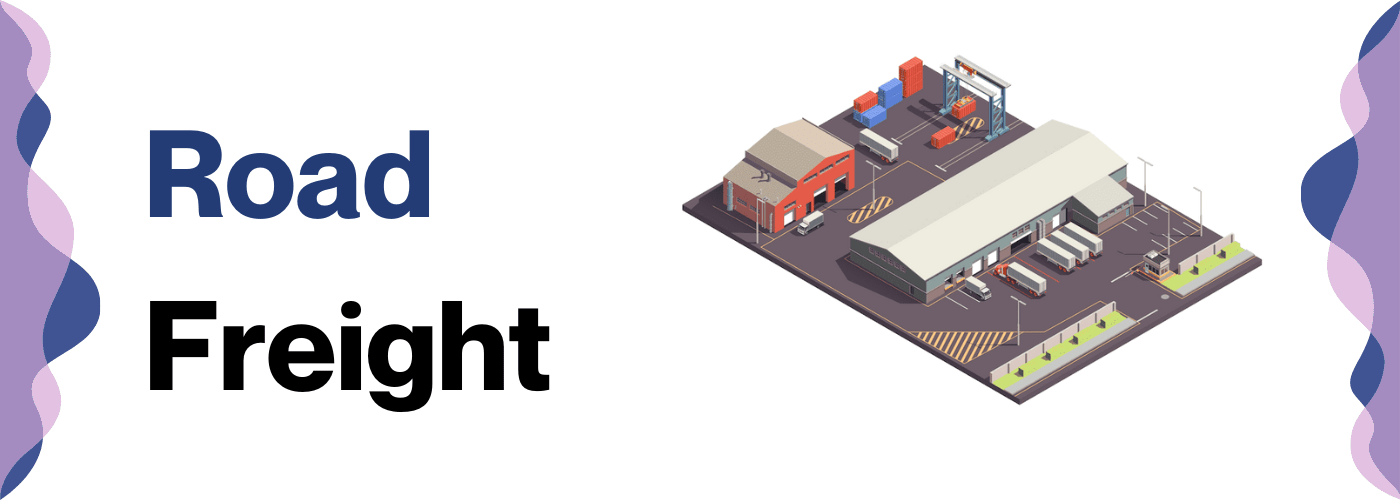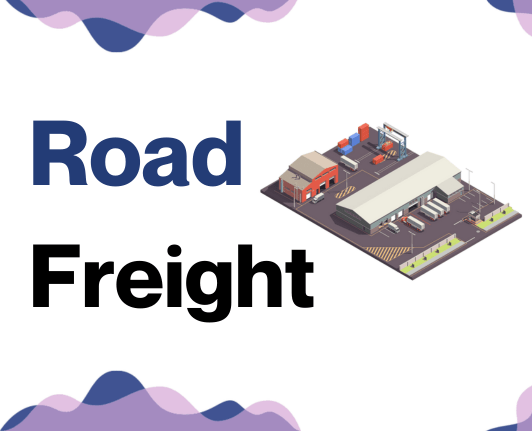Shipping goods from spicy Thailand to flavorful Tunisia feels like trying to ride an elephant through a bustling souk! However, the real challenge lies in understanding complex freight rates, unpredictable transit times, and intricate customs regulations.
This comprehensive destination guide will empower you, making these hurdles appear insignificant by elucidating various freight options, detailing processes of customs clearance, exploring duties, taxes, and more.
Expect not just information but actionable advice tailored for businesses like yours, aspiring to venture into the Tunisian market from Thailand. If the process still feels overwhelming, let DocShipper handle it for you! As an international freight forwarder, we aim to simplify your journey, managing every crucial step of the shipping process, turning potential challenges into stepping stones to your success.
Which are the different modes of transportation between Thailand and Tunisia?
Spotting the best transportation method between Thailand and Tunisia is like choosing the right tool for a job - it depends on your specific needs and obstacles. Imagine Thailand and Tunisia as two distant lands separated by mountains (or in real terms, many countries and oceans).
Given that neither roads nor rail can swiftly cross these ‘mountains,' our journey narrows down to deciding between air or sea freight routes. As you plot this adventure, consider factors like cost, speed, volume, and nature of goods. Your choice will shape the efficiency, cost-effectiveness, and success of your tuneful trade story.
How can Siam Shipping help?
When it comes to shipping goods from Thailand to Tunisia, don't let distance and logistics complexities bog you down. At DocShipper, our expertise makes it simple. With custom solutions for sea, air, rail or road transport, we streamline your process and clear customs hurdles. Need assistance or a free estimate? Reach out to our consultants, they're just a call away.


![]()
Siam Shipping Tip: Consider ocean freight if:
- You are shipping large volumes or bulky items, as sea freight offers the most space at a cost-effective rate.
- You're not racing against the clock. Ocean freight takes its sweet time, especially when stacked up against other transport methods.
- Your supply chain is linked up with big-name ports. Think of it as the VIP lane on the maritime superhighway.
Sea freight between Thailand and Tunisia
Bridging between the luxuriant landscapes of Thailand and the historic corridors of Tunisia is a vast expanse of ocean, bustling with container vessels packed with goods.
These sea arteries facilitate a vibrant trading dynamic, with ports like Laem Chabang in Thailand and Rades in Tunisia acting as the pulsating hubs of economic exchange.
In this labyrinth of global trade, sea freight stands tall as a cost-effective pathway for transporting high-volume merchandise, though often trading speed for savings.
Yet beneath this surface of trade, there's a complex maze that shippers often find themselves lost in. Despite the economic benefits of ocean shipping, the plethora of regulations, customs requirements, and logistical hurdles often result in costly mistakes and delays.
However, with the right information and best practices, these initial hurdles can morph into stepping stones for your international business journey. In this part of our guide, we'll provide a compass for your sea voyage, breaking down those seemingly giant waves to manageable ripples. Let's set sail on these sea trades and unravel the mysteries of ocean shipping between Thailand and Tunisia.
Main shipping ports in Thailand
Port of Laem Chabang
Location and Volume: Situated in the city of Laem Chabang, at the Gulf of Thailand, the Port of Laem Chabang is Thailand's largest port, handling a shipping volume of over 7.2 million TEUs annually.
Key Trading Partners and Strategic Importance: The port is a significant trading point with countries across Asia, notably including China, Malaysia, and Japan. It's strategically vital due to its proximity to the Eastern Economic Corridor, Thailand's main industrial and infrastructure development zone.
Context for Businesses: If your business is actively involved in trading within Asia, particularly in the automotive, electronics, or petrochemical industries, employing the Port of Laem Chabang as a part of your logistics strategy could potentially streamline your operations and transportation costs.
Port of Bangkok
Location and Volume: Located on the right side of the Chao Phraya River, the Port of Bangkok, also known as Klong Toey, is the second busiest port in Thailand. It handles an estimated volume of 1.3 million TEUs per year.
Key Trading Partners and Strategic Importance: The port's main trading partners include China, Japan, and the United States. It holds strategic importance as it is Thailand's primary river port and is considered the gateway to Bangkok's extensive domestic logistics network.
Context for Businesses: If your organization is constantly shipping and receiving goods from America, China, or Japan, the Port of Bangkok offers a direct route to this bustling metropolis and its vast domestic distribution networks. This could result in a more efficient supply chain and potentially lower your operational costs.
Port of Map Ta Phut
Location and Volume: Located in Rayong Province, the Port of Map Ta Phut is primarily a cargo-handling port with an annual handling volume of approximately 850,000 TEUs.
Key Trading Partners and Strategic Importance: With key trading partners such as Japan, Australia, and ASEAN members, the port holds strategic importance as it is the largest port in Thailand dedicated to industrial goods. It plays a vital role in the export of oil, LNG, and chemicals.
Context for Businesses: If your company is engaged in the chemical, oil, or LNG industries, then the Port of Map Ta Phut can be an integral part of your shipping process. With its dedicated infrastructure, your shipping times could be reduced, and complexities in handling potentially dangerous goods can be minimized.
Port of Sriracha
Location and Volume: The Port of Sriracha, located in Chonburi Province, is a notable industrial port known for its high clearance capacity, handling over 578,000 TEUs annually.
Key Trading Partners and Strategic Importance: It's a hub for regional trade, sharing connections with Japan, Australia, and neighboring ASEAN countries. The port is strategically significant due to its fully integrated petrochemical complex - one of the largest in Asia.
Context for Businesses: If your business specializes in petrochemical products and industrial raw materials, the Port of Sriracha can cater to your specific needs, offering specialized, streamlined shipping solutions.
Port of Sattahip
Location and Volume: The Port of Sattahip, located in Chonburi Province, is primarily a naval base and commercial port, handling over 200,000 TEUs annually.
Key Trading Partners and Strategic Importance: The port has trade links across Asia, Canada, and the United States. Its strategic importance lies in handling several types of cargo, including RoRo, and its close proximity to the Eastern Seaboard Industrial Area.
Context for Businesses: If your business deals with specialized goods such as automotive, machinery, or needs RoRo shipping methods, Sattahip port can be a valuable addition to your transportation strategy.
Port of Songkhla
Location and Volume: Located on the east side of the Malay Peninsula, the Port of Songkhla handles approximately 95,000 TEUs per year.
Key Trading Partners and Strategic Importance: Songkhla port has established trading relationships with neighboring ASEAN countries and China. Its strategic location provides direct access to the southern region of Thailand and Malaysia.
Context for Businesses: If you aim to expand your operations and distribution in the southern region of Thailand or northern Malaysia, the Port of Songkhla can provide an effective conduit, potentially improving your shipping timelines and expanding your target market.
Main shipping ports in Tunisia
Location and Volume: The Port of Tunis, located in the Gulf of Tunis in the Mediterranean Sea, is the most significant shipping hub in Tunisia. It handles around 983,220 TEUs annually, which includes a substantial share of the country's import and export volume.
Key Trading Partners and Strategic Importance: The Port of Tunis is a gateway to Europe and North Africa. It has strong trade links to France, Italy, Germany, and Spain. Its strategic position strengthens Tunisia's trade and refines the exchange process, making it a vital part of the country's economy.
Context for Businesses: If your business aims to enhance communication with European and North African markets or if you're planning to build mutually beneficial partnerships, the Port of Tunis is a critical element to consider due to its established trade route networks and connectivity.
Port of Bizerte
Location and Volume: Situated in the extreme North of Tunisia on the Mediterranean sea, the Port of Bizerte is second in terms of shipping volume in Tunisia, moving approximately 212,130 TEUs annually.
Key Trading Partners and Strategic Importance: Bizerte has significant trading with France, Algeria, Italy, and the United States, where oil, raw materials, and general cargo are frequently exchanged. Its proximity to Europe also offers potential for regional trade acceleration.
Context for Businesses: If your enterprise is involved with the oil industry or bulk shipping, the Port of Bizerte, with its liquid and dry bulk facilities, can play a defining role in your logistics management.
Port of Sousse
Location and Volume: The Port of Sousse, located in the east of Tunisia, is vital for container traffic in the region, handling around 63,420 TEUs annually.
Key Trading Partners and Strategic Importance: Sousse has prevalent trade relations with China, Italy, and Germany, facilitating a wide range of cargo transport including raw materials, agricultural products, and manufactured goods.
Context for Businesses: If your business is centered around manufacturing or moving perishable and agricultural goods, consider the Port of Sousse for its efficient and varied cargo handling capacities.
Port of Sfax
Location and Volume: In the southeast of Tunisia, the Port of Sfax is a busy, industrious port with an annual volume of 62,400 TEUs.
Key Trading Partners and Strategic Importance: Thanks to its well-equipped facilities, Sfax has key trading relations with Asian and European markets, particularly with China, Italy, and Croatia.
Context for Businesses: If your commercial interest spans industrial, construction or chemical sectors, the Port of Sfax, with its strong industrial connections, reliable handling capacities, and multipurpose terminals, can bolster your import/export strategy.
Port of Gabès
Location and Volume: Placed on the Gulf of Gabès in the eastern part of Tunisia, the Port of Gabès deals with approximately 20,500 TEUs in traffic per year.
Key Trading Partners and Strategic Importance: Gabès has a dynamic interaction with China, Italy, and France, dealing predominantly with chemical and specialty product imports and exports.
Context for Businesses: Companies involved in the chemical and specialty products trades will find Gabès' facilities advantageous for distribution, given its targeted handling and operations.
Port of Zarzis
Location and Volume: The Port of Zarzis, situated in far southern Tunisia, has a yearly throughput of around 7,100 TEUs.
Key Trading Partners and Strategic Importance: Zarzis has prime trading partners in Italy, Spain, and France, handling mostly food products, livestock, and general cargo.
Context for Businesses: For businesses dealing with food products and livestock, Zarzis has specialized facilities and practices that ensure the preservation and proper handling of your trade, which can be pivotal for your logistics planning.
Should I choose FCL or LCL when shipping between Thailand and Tunisia?
Choosing between consolidation (LCL) and full container load (FCL) when shipping from Thailand to Tunisia is a pivotal step. This decision can shape your cargo's journey, influencing factors such as cost, delivery time, and the overall success of your shipment.
This section unpacks these two sea freight options, breaking down their advantages and conditions. Empowered with this information, you can make a choice that aligns perfectly with your specific shipping needs, ensuring the safe, effective, and efficient transportation of your cargo. Let's dive into the details!
LCL: Less than Container Load
Definition: LCL (Less than Container Load) shipping is when your cargo occupies a portion of a shared container, a cost-efficient choice when dealing with low volume shipments.
When to Use: This method is best for shipments that do not exceed the threshold of 13-15 Cubic Meters (CBM), capitalizing on the flexibility and cost-effectiveness of sharing space with other freight.
Example: For instance, a cottage industry in Thailand wanting to exports small batches of handicrafts to Tunisia can opt for LCL freight. When shipping volumes are not large enough to justify the cost of a full container, this method provides economical management of freight.
Cost Implications: With LCL shipment, you only pay for the volume your goods occupy, making it a more economical choice compared to the Full Container Load (FCL) for smaller volume shipments. However, it may expose your cargo to potential handling damage due to the extra loading and unloading steps involved, which could result in supplementary costs. Hence, considering the potential trade-off between cost-effectiveness and risk is crucial.
FCL: Full Container Load
FCL, or Full Container Load, is a type of ocean freight where a shipper rents an entire container. FCL shipping is an economical choice for high-volume shipments, often preferable when cargo is more than 13-15 cubic meters. By using FCL, you ensure safety as the container remains sealed from origin to destination.
Consider this example: a large furniture exporter in Thailand fills up a 40'ft container with their products. They use FCL because it's cost-efficient for their high-volume shipment, and chosen for its safety aspect since the container isn't opened until it reaches the buyer in Tunisia.
The cost of an FCL shipping quote is affected by factors such as the size of the container (20'ft container vs. 40'ft container), the distance, and fluctuating sea freight rates. But generally, shipping larger volume cargos is cheaper with FCL than LCL due to a single, flat-rate fee per container, regardless of its contents. Thus, FCL can lead to significant cost savings for high volume shipments.
Unlock hassle-free shipping
Looking to simplify your ocean cargo shipping between Thailand and Tunisia? Bringing clarity to your logistic challenges, DocShipper is your leading freight forwarder proffering hassle-free solutions. Our adept team of ocean freight experts considers crucial elements like cargo volume, time-sensitivity, and cost-effectiveness before suggesting the perfect choice between consolidation and full container load. Experience the advantage of customised freight options. Touch base with us and get your free shipping estimation today.
How long does sea freight take between Thailand and Tunisia?
Shipping goods via sea freight from Thailand to Tunisia typically takes an average of 30 to 40 days, although this depends heavily on a variety of factors. These factors can include the specific ports used, the weights and sizes of your goods, as well as their particular nature. For the most accurate estimate, considering these variables, it may be best to contact a freight forwarder like DocShipper for a tailored quote.
Here is the information for the main freight ports in both countries:
| Thailand Ports | Tunisia Ports | Average Transit Time (days) |
| Laem Chabang Port | Port of Rades | 46 |
| Bangkok Port | Sfax Port | 32 |
| Map Ta Phut Port | Bizerte Port | 38 |
| Sattahip Port | Gabès Port | 43 |
Note: The average transit times could vary and should be confirmed with your freight forwarder.
How much does it cost to ship a container between Thailand and Tunisia?
Determining the exact ocean freight rates between Thailand and Tunisia can feel a bit like puzzle-solving. Why? It's all about the details. Your shipping cost per CBM could span a broad spectrum, pulled one way or the other by various elements.
These factors include the Point of Loading, Point of Destination, the choice of carrier, the type of goods to be transported, and even the monthly market fluctuations.
Guaranteed assurance comes in the form of our dedicated shipping specialists who work relentlessly to serve you; they provide customized quotes that ally with your specific shipment demands. Shipping is a complex web, but with us, you're empowered to untangle it.
Special transportation services
Out of Gauge (OOG) Container
Definition: An OOG container is specifically designed to handle cargo that exceeds standard size limitations. It's a versatile option for oddly shaped or oversized goods.
Suitable for: Oversized machinery, structures, or equipment that doesn't fit into standard container dimensions.
Examples: Large construction machinery, boats, or even aviation parts.
Why it might be the best choice for you: If your business needs to transport out-of-gauge cargo, then this shipping option provides the flexibility to handle non-standard shapes and sizes safely.
Break Bulk
Definition: Break bulk refers to goods that must be loaded individually, not in a shipping container or in bulk as with oil or grain. It's called 'break bulk' due to the need to break down a cargo into smaller units.
Suitable for: Goods that can't be containerized due to their weight, size, or quantity.
Examples: Construction equipment, timber, steel beams, and heavy machinery.
Why it might be the best choice for you: If your cargo is not suitable for containers and not enough to justify a charter, break bulk can often provide the most economical solution.
Dry Bulk
Definition: Dry bulk shipping is used for homogeneous commodities transported in large quantities, structured without traditional packaging.
Suitable for: Commodities like grains, coal, ore, cement, sugar, or fertilizer.
Examples: You're a Thai agriculture firm shipping high volumes of rice or a Tunisian phosphate mine exporting fertilizer loads.
Why it might be the best choice for you: If you're moving high volumes of unpackaged dry goods, a dry bulk option offers an efficient, loose cargo load solution that can be particularly cost-effective.
Roll-on/Roll-off (Ro-Ro)
Definition: Ro-Ro vessels are designed for wheeled cargo such as automobiles, trucks, semi-trailer trucks, trailers, or railroad cars that are driven on and off the ship on their own wheels or using a platform vehicle.
Suitable for: Vehicles, heavy equipment, or goods laden on trailers.
Examples: You're an automobile manufacturer exporting cars or construction company shipping heavy machinery.
Why it might be the best choice for you: The ease of loading and unloading wheeled or tracked vehicles makes Ro-Ro an exceptional choice for companies needing to transport these types of goods.
Reefer Containers
Definition: Reefer containers are refrigerated shipping containers used for perishable commodities which need temperature control during transit.
Suitable for: Perishable goods such as fruits, vegetables, seafood, meats, or pharmaceuticals.
Examples: A food producer sending fresh pineapples from Thailand or a pharmaceutical company delivering medication to Tunisia.
Why it might be the best choice for you: If maintaining strict temperature control is vital for your cargo, investing in a reefer container ensures your goods arrive in their optimal state.
Navigating different shipping options can be overwhelming. DocShipper streamlines the process and handles everything from customs clearance to delivery. Contact us today for a free shipping quote in less than 24 hours.


![]()
Siam Shipping Tip: Consider Air freight if:
- Time's ticking and you can't wait. Air freight is like the express train of shipping; it's the quickest way to get your stuff from A to B.
- You're not shipping a warehouse. If your cargo is under 2 CBM, air freight is a snug fit for your smaller haul.
- Your supply chain ends somewhere off the beaten path. Airports are everywhere, so you can get your goods to those hard-to-reach spots.
Air freight between Thailand and Tunisia
Choosing to ship your goods from Thailand to Tunisia via air freight is a surefire way to ensure speedy and reliable delivery. Picture sending a birthday gift to your loved ones; you'd want it to reach on time, right? Similarly, high-value items like electronics or pharmaceuticals, especially in smaller quantities, are best sent using this method.
With air freight, you can forget about worrying if your products will arrive on time or in good condition. It's like purchasing a VIP ticket for your goods.
Turning the page, a lot of businesses jump the gun when deciding to ship via air. It's similar to trying to fit an oversized suitcase into an airplane's overhead bin without checking the dimensions first.
They fail to take into account factors that could significantly increase shipping costs, such as incorrect calculation of their shipment's weight - like forgetting to include the packaging in the total weight!
Remember, ignorance of these crucial details can be a costly affair. So, in the next part, we venture into avoiding these common pitfalls and ensuring the safe, economical passage of your goods.
Air Cargo vs Express Air Freight: How should I ship?
Confused choosing between express air freight and air cargo for your Thailand-Tunisia shipment? Straightforwardly, express air freight uses a dedicated airplane for your goods, promising swiftness, while air cargo tucks your cargo into a shared airline, a cost-effective but slower method. Let's dive in and discover the ideal solution that marries your budget, speed requirements, and the nature of your goods with the demands of your business. Let's get your goods airborne the right way, shall we?
Should I choose Air Cargo between Thailand and Tunisia?
Air freight between Thailand and Tunisia is a viable choice if you're shipping bulk goods above 100/150 kg (220/330 lbs). Not only is it cost-effective, but airlines such as Thai Airways and Tunisair provide regular and reliable services.
Please note, while transit times may be longer due to fixed schedules, using this method may optimize your budgetary needs. With air cargo, you gain the flexibility and competitiveness necessary for today's fast-paced business environment.

Should I choose Express Air Freight between Thailand and Tunisia?
Express air freight, a specialized service using dedicated cargo planes - no passengers involved, could be an optimal choice for small, urgent shipments. Suppose your cargo weighs under 100/150 kg (220/330 lbs) or is less than 1 CBM. Firms like FedEx, UPS, or DHL offer reliable express air freight services.
These global operators deliver fast, trackable shipping, presenting a viable solution for quick delivery from Thailand to Tunisia. Remember, express air freight can provide added speed and certainty for your crucial consignments.

Main international airports in Thailand
Suvarnabhumi Airport
Cargo Volume: Suvarnabhumi Airport handled approximately 97 770 tons of cargo per year, marking it as Thailand's busiest international freight hub.
Key Trading Partners: Primarily China, Japan, and the United States.
Strategic Importance: Serving as a main entry and exit point in Southeast Asia, Suvarnabhumi acts as a significant Southeast Asian cargo gateway.
Notable Features: The airport is equipped with cargo village facilities and a free zone area, offering ample space for warehousing and transloading needs.
For Your Business: If you're seeking a high-volume hub with comprehensive facilities and strong connections to Asia's biggest economies, Suvarnabhumi Airport may suit your shipping strategy well.
Don Mueang International Airport
Cargo Volume: In 2022, this airport reported handling about 35 000 tons of cargo.
Key Trading Partners: Major trading partners include China, Japan, and Singapore.
Strategic Importance: Known as Asia's oldest operating airport, it serves as an important secondary hub for cargo in and out of Thailand.
Notable Features: Although smaller than Bangkok's other airport, Don Mueang boasts a dedicated cargo terminal and established airline routes.
For Your Business: If your operations need a less trafficked, yet efficient gateway into Thailand, consider incorporating Don Mueang into your shipping plan.
Phuket International Airport
Cargo Volume: In 2023, Phuket International Airport handled about 25 000 tons of cargo.
Key Trading Partners: Key markets primarily include China, Australia, and Russia.
Strategic Importance: Located in southern Thailand, it serves as an important hub for cargo freight to the Andaman Sea and beyond.
Notable Features: It possesses a modern cargo warehouse and is the third busiest airport in Thailand.
For Your Business: If your supply chain includes frequent shipments to the southern regions of Asia or marine routes via the Andaman Sea, Phuket International might be a wise choice.
Chiang Mai International Airport
Cargo Volume: As of 2022, the airport handled nearly 18 000 tons of air cargo.
Key Trading Partners: Key trading partners include China, Taiwan, and Korea.
Strategic Importance: Its geographical location makes it an effective gateway to Northern Thailand and neighbouring regions in Myanmar and Laos.
Notable Features: The airport includes a modest yet efficient Cargo Terminal for handling international freight.
For Your Business: If your business caters to markets in Northern Thailand or requires easy access to the Greater Mekong Subregion, Chiang Mai International Airport could be an advantageous choice.
Hat Yai International Airport
Cargo Volume: Approximately 12 000 tons of freight passed through per year.
Key Trading Partners: Frequently trades with markets in Malaysia, Singapore, and China.
Strategic Importance: Located in Thailand's southern region, it performs a key role for cargo transit to Malaysia and other parts of Southeast Asia.
Notable Features: It is a smaller airport, offering potential less congested operations and quicker turnaround times.
For Your Business: For smaller scale operations or as an alternative route to avoiding major airport congestion, Hat Yai could provide an effective complement to your overall shipping needs.
Main international airports in Tunisia
Tunis Carthage International Airport
Cargo Volume: The airport processed over 80,000 tonnes of freight in 2022.
Key Trading Partners: Primarily France, Italy, Germany, Spain, and China.
Strategic Importance: Being the largest airport in Tunisia, Tunis Carthage is a key link in the logistics chain for businesses seeking trade with North Africa.
Notable Features: It offers a 24/7 cargo terminal and multiple freight handling facilities. Additionally, major international carriers serve this airport, offering global connectivity.
For Your Business: With its central location and vast network, you can effectively plan for smooth delivery of your cargo, making your trade processes with Tunisia seamless and efficient.
Monastir Habib Bourguiba International Airport
Cargo Volume: The airport has a cargo handling capacity of over 20,000 tonnes annually.
Key Trading Partners: Mostly European countries such as France, Germany, and the UK.
Strategic Importance: Monastir Habib Bourguiba International plays a vital role in freight transport due to its strategic location in Eastern Tunisia.
Notable Features: The airport is equipped with modern cargo facilities and various airlines provide dedicated freight services to Europe and other parts of the world.
For Your Business: Its location close to many industrial areas reduces time and costs associated with domestic land transport from the airport, potentially improving your supply chain efficiency.
Sfax–Thyna International Airport
Cargo Volume: The airport processes up to 3,500 tonnes of cargo each year.
Key Trading Partners: Major trading partners include France, Italy, and a host of North African nations.
Strategic Importance: Sfax-Thyna is strategically positioned in Southern Tunisia, serving as an essential gateway for businesses trading with regions in South Tunisia and adjacent African countries.
Notable Features: Offers cargo facilities with a comprehensive range of services including handling, storage, and customs services.
For Your Business: Considered for shipments targeting Southern Tunisia and if trading with businesses located in this region to reduce your domestic transportation needs.
Tozeur–Nefta International Airport
Cargo Volume: Handling an average of 2,000 tonnes of cargo annually.
Key Trading Partners: It mainly serves the trade between Tunisia and Europe, specifically France and Italy.
Strategic Importance: Situated in Western Tunisia, Tozeur-Nefta serves as an important linkage for the transport of goods in and out of the Sahara region of the country.
Notable Features: The airport hosts a variety of airlines operating cargo flights, and it is equipped with cargo storage and handling facilities.
For Your Business: If you're trading with businesses situated in the Western region of Tunisia, Tozeur-Nefta could be a favourable alternative to Tunis Carthage.
Enfidha–Hammamet International Airport
Cargo Volume: With an annual freight capacity of approx. 5,000 tonnes.
Key Trading Partners: Primarily Europe including France, Germany, Belgium, and the UK.
Strategic Importance: Positioned between Tunis and Sousse, Enfidha-Hammamet airport offers strategic access to the commercial and industrial hubs of both cities.
Notable Features: The airport utilises modern facilities for cargo handling, including high-capacity storage and advanced logistics solutions.
For Your Business: With its strategic placement, this airport can be a reliable and effective route if your operations or your key business partners are located in the northern coastal region of Tunisia.
How long does air freight take between Thailand and Tunisia?
Typically, air freight between Thailand and Tunisia takes approximately 6-10 days. However, the exact transit time can fluctify, influenced by factors such as designated airports, the weight of your shipment, and the characteristics of the goods being transported. Should you seek precision in transit times, it's best to engage with a professional freight forwarder, like DocShipper.
How much does it cost to ship a parcel between Thailand and Tunisia with air freight?
Estimating air freight between Thailand and Tunisia, you can expect a broad average rate of $3 - $10 per kg. However, factors such as airport departure and arrival distance, parcel dimensions, weight, and nature of goods can affect the final cost significantly.
Fear not, our specialized team proactively ensures we provide the best individual rates based on these variables. Remember, we quote on a per-shipment basis. So, get in touch and receive your free, customized quote in less than 24 hours.
What is the difference between volumetric and gross weight?
Gross weight refers to the actual weight of your package, including the cargo and its packaging. Volumetric weight, on the other hand, estimates the cubic space your shipment occupies in the air freight vehicle.
In Air Cargo, the calculation for volumetric weight employs the following formula: Length (cm) x Width (cm) x Height (cm) / 6000. And with Express Air Freight services, the divisor changes to 5000 instead. Let’s put it into perspective:
Let’s say your shipment measures 50cm x 30cm x 20cm and weighs 20kg (which is about 44 lbs).
Using the Air Cargo formula, the volumetric weight would be 50 x 30 x 20 / 6000 = 5kg (or approximately 11 lbs). If we use Express Air Freight, it would be 50 x 30 x 20 / 5000 = 6kg (roughly 13.2 lbs).
So, why should you bother about these calculations? Freight charges. Freight carriers determine your bill largely based on weight. But not just the actual weight; they bill you for whichever is higher - the gross weight or the volumetric weight. Hence, understanding these weights helps optimize your shipment and control costs.




![]()
Siam Shipping Tip: Consider Door to Door if:
- You value convenience and want a seamless shipping process, as door-to-door takes care of every step from pickup to delivery.
- You appreciate having a single point of contact, as door-to-door services typically provide a dedicated agent to handle all aspects of the shipment.
- You want less transitions for your cargo, reducing the risk of damage or loss, as door-to-door minimizes transitions between different modes of transport.
Door to door between Thailand and Tunisia
Navigating the maze of international shipping? Consider door-to-door delivery - a hustling service that collects your shipments from Thailand right to a destination in Tunisia, smoothly. With its convenience, speed, and lack of red tape, it's ideally suited for businesses seeking easy solutions. Intrigued? Well, tighten your seatbelts. Let's dive into this convenience-loaded service model.
Overview – Door to Door
Importing from Thailand to Tunisia? Door to door shipping may just be your stress-free solution. It's a comprehensive service, handling every step from pickup to delivery - a favorite among our clients.
It eradicates the complex transit procedure challenges but might slightly edge your costs. Its main advantage is freeing you from the hassles of customs, documentation, and multiple freight forwarding.
But remember, you need to choose reliable service providers to ensure timely delivery. Learn more as we dive into details - the advantages, pitfalls, and how to ace the process with the right strategic decisions.
Why should I use a Door to Door service between Thailand and Tunisia?
Ever tried juggling a hot potato while tightrope walking? That's what managing all aspects of your international shipment can feel like without Door to Door service. Let's dive into five reasons why this service between Thailand and Tunisia might just be your logistic lifesaver.
1. Say Goodbye to Stress: With Door to Door shipping, your freight provider handles all of the tricky details. They'll pick up your goods directly from your location and take care of everything that follows, saving you from the logistics juggling act and making the process as smooth as silk.
2. Timeliness is Key: If you have urgent shipments, punctuality isn't just a preference; it's an absolute necessity. Door to Door services provide reliable timelines and ensure your shipment reaches its destination just like your favourite pizza - hot, fresh, and right on time!
3. Sparks Fly for Unique Cargo: Have sensitive goods or complex cargo? The specialized care and attention in Door to Door service might be the perfect match for you. It's like your cargo meets its soulmate who whispers, 'I'll protect you until the end.'
4. Hands-Off Trucking: The beauty of Door to Door service lies in its convenience. The trucking from Thailand all the way to Tunisia? Don't sweat it. Your freight forwarder will drive that truck right up to the final destination.
5. Cruise Through Customs: When it comes to clearing customs, this service is a real game-changer. Forget about the nightmare of paperwork and duties; your freight forwarder has it covered. It's like chilling in a hammock while your taxes are being done - blissful!
So, the next time you're considering how to ship from Thailand to Tunisia, picture the serenity of a Door to Door service doing the heavy lifting for you. Happy shipping!
DocShipper – Door to Door specialist between Thailand and Tunisia
Experience stress-free, door-to-door shipping from Thailand to Tunisia with DocShipper. We provide a dedicated Account Executive well-versed in international logistics to manage your freight. Trust us to expertly handle everything from packing and transport to customs clearance, utilizing all shipping methods. Your peace of mind is our priority. Reach out for a free estimate within 24 hours or contact our consultants for free guidance today.


Customs clearance in Tunisia for goods imported from Thailand
Customs clearance is a pivotal part of international shipping between Tunisia and Thailand. The intricate procedure can be riddled with unforeseen costs if you're unfamiliar with various aspects like customs duties, taxes, or quotas.
Not to mention, incorrect licenses risk your shipment getting held up in customs. Navigating this maze of rules is crucial to avoid setbacks in your shipping journey. Not to worry, future sections of our guide will unpack every detail for clarity.
Remember, DocShipper is here to guide you, capable of handling all goods worldwide. Looking for an estimate to plan your project? Reach out to us with your goods' origin, value, and HS Code, as these determine your next steps. We're just a message away to propel your shipping operations smoothly!
How to calculate duties & taxes when importing from Thailand to Tunisia?
Cracking the code of customs duties and taxes is no small feat, particularly when importing goods from Thailand to Tunisia. It calls for an awareness of several key elements including the country of origin, HS (Harmonized System) code, customs value, applicable tariff rate, plus any potential extra taxes or fees associated with your goods.
Think of it as a puzzle - one where accounting for each piece is paramount to achieving a crystal-clear financial picture of your shipment's journey. Let's kick off this puzzle-solving mission by identifying the birthplace of your goods - the country in which they were manufactured or produced.
Step 1 - Identify the Country of Origin
Knowing your product's country of origin, in this case, Thailand, is fundamental in your international trading journey. It's your starting point for five key reasons:
1. Trade Agreements: Thailand and Tunisia have certain trade agreements that significantly affect customs duties. Compliance lowers costs, giving you a competitive edge.
2. Harmonized System Code (HS Code): This global classification method dictates your product's tariff. Knowing your item's origin is essential to procure this code.
3. Import Restrictions: Each country has unique regulations. Thailand may have specific restrictions on exporting certain goods, and Tunisia might restrict imports.
4. Duty Rates: These can vary significantly by country, even for the same product, depending on the origin.
5. Documentation: Your shipment's documentation must accurately reflect its origin. Mistakes here can lead to delays and fines.
So, before jumping to HS codes, ensure you've established origin accurately. Understand the trade agreements and import restrictions between Thailand and Tunisia. This knowledge will aid in a smooth and cost-effective shipping process. Consider consulting a shipping expert or legal advisor to navigate these sometimes complex regulations. Savvy importers are always well prepared. Remember, the success of your business venture begins with mastering these fundamentals.
Step 2 - Find the HS Code of your product
Understanding the Harmonized System Code (HS Code) is a crucial step in the process of international shipping. Originating from the World Customs Organization, the HS Code is a globally standardized system of numbers to classify traded products. It's essentially the universal language of product naming, helping to clear any ambiguity in trade.
Generally, the quickest and most straightforward method to locate the HS Code of your product is to inquire from your supplier. As they are intimately familiar with the products they're importing and the relevant regulations, they're likely to readily provide the necessary information.
However, in instances where this avenue isn't plausible, we've outlined an easy step-by-step guide to find it. It begins with employing an HS lookup tool. A recommended tool is the Harmonized Tariff Schedule.
Once you access this site, enter the name of your product in the search bar provided. From there, look at the Heading/Subheading column. The HS Code for your product will be situated there.
Please note, obtaining an accurate HS Code is of paramount importance. Any inaccuracies might be a gateway to potential fines and delays in customs clearance.
Here's an infographic showing you how to read an HS Code.

Step 3 - Calculate the Customs Value
Calculating the Customs Value isn't as tough as it seems, even if it sounds daunting initially. Let's break it down: the customs value differs from the product value because it's not only about the cost of the goods. It includes the price of your goods + the cost of international shipping + insurance costs.
This sum makes the CIF (Cost, Insurance, and Freight) value, which is used to determine your customs value. Consider this, you're importing textiles from Thailand to Tunisia, priced at $10,000. Add $2,000 for shipping and $1,000 for insurance.
Your CIF is now $13,000, which is the customs value. Remember, each country may employ different methods for customs valuation, but the basics remain the same. So, take a step back and see how the components fit together – it all adds up!
Step 4 - Figure out the applicable Import Tariff
An import tariff, simply put, is a tax imposed on goods crossing international borders. In Tunisia, it falls under the Harmonized System (HS) Classification which is the globally recognized system for naming and categorizing goods.
To determine the exact tariff for your product, you'll need to:
1. Gather the previously identified HS code for your goods.
2. Input this code into the TARIC System - European Customs, along with Thailand as the country of origin.
3. Analyze the duties and taxes applied to your product.
Here's an example to make it clearer. Suppose our product is classified under HS code 8501, which covers electric motors and generators. The TARIC System reveals a tariff rate of 5%. If the Cost, Insurance, and Freight (CIF) costs amount to $10,000 USD, the import duties can be calculated as 5% of $10,000, which equals $500 USD.
Bear in mind, the exact calculation is dependent on your product's HS code, the set tariff rate and CIF costs, therefore each case might slightly differ. Your aim should be to have all the appropriate details upfront to avoid surprises regarding import duties.
Step 5 - Consider other Import Duties and Taxes
In addition to the standard tariff rate, it's essential to account for any other import duties that may apply when importing goods from Thailand to Tunisia. These can vary based on the product's nature and the country of origin.
For instance, an excise duty might be levied on certain products like alcohol or tobacco. Let's say an extra 10% on top of your standard tariff.
Another factor to be mindful of is anti-dumping taxes. If it's found that goods are being 'dumped' - sold at a lower price than in the home market - additional taxes can be imposed. For our purpose, imagine that this surcharge might be another 5% for certain goods.
Most crucially, don’t overlook the VAT rate. In Tunisia, the standard VAT rate is approximately 19%. This is calculated on the CIF (Cost, Insurance, Freight) value plus duty.
If we had a CIF value of $1000 and a duty of $150 (15% standard tariff), we would have a valuation of $1150. Applying 19% VAT to this, you'd pay $218.5.
Please note that the rates used here are just examples and might not match the actual rates. It’s recommended to obtain the precise rates relating to your shipment. Remember - understanding these different components can turn a daunting task into a manageable one, and ensure no unexpected expenses upon arrival at Tunisian customs.
Step 6 - Calculate the Customs Duties
The process of calculating customs duties takes into account several key elements. The base is the customs value: the total value of your goods, including freight and insurance. You multiply this by the duty rate, say 10%. In our case - shipping goods worth $5000 from Thailand to Tunisia, with a duty rate of 10%, customs duties equate to $500.
Adding VAT makes it different. Firstly, the VAT base is exceeded by the customs value and the duties. Suppose we have the above example but with 18% VAT. You'd calculate VAT at 18% not just on the $5000 cost of goods, but also the $500 customs duty, making the VAT $990.
Lastly, things get more complex with anti-dumping taxes and excise duty. Suppose we add a 5% anti-dumping tax and $200 excise duty to our second example, on top of customs duties and VAT. The customs duties rise to $550 (adding the anti-dumping tax), the excise tax adds directly to the total duty payable, yielding $1240. VAT is now charged on the total value including excise duty, bringing the total cost to $6494.
Navigating this can be challenging. At DocShipper, we ease your burden by handling every step of customs clearance globally. We ensure you don't get overcharged and can provide a free quote in less than 24 hours.
Does DocShipper charge customs fees?
At DocShipper, we wear two hats - your shipping agent and customs broker. In Thailand and Tunisia, our role includes handling customs clearance, for which we charge a fee. Meanwhile, customs duties and taxes are separate costs that directly benefit the government. Rest assured, we're transparent. The official papers from the customs office will verify you're only covering the government's charges. It's like dining out; our fee is the service charge, while the customs duties are your meal cost. Both form part of your bill, but each has its unique role and recipient.
Contact Details for Customs Authorities
Thailand Customs

Official name: Customs Department, Thailand
Official website: http://www.customs.go.th/
Tunisia Customs

Official Name: Tunisian Customs General Directorate
Official Website: https://www.douane.gov.tn/
Required documents for customs clearance
Stuck decoding the jumble of paperwork for customs clearance? Relax, we've got your back. We'll soon break down the Bill of Lading, Packing List, Certificate of Origin, and Documents of Conformity (CE standard). Stay tuned to make your shipping hassle-free.
Bill of Lading
The Bill of Lading is your golden ticket when shipping goods from Thailand to Tunisia. It's like a receipt - a binding agreement that ensures your goods transition smoothly from shipper to buyer. Not just a paper trail, the Bill of Lading also legally transfers ownership, giving you peace of mind.
Moreover, thanks to advancements in technology, you can benefit from an electronic or 'telex' release. This fast-tracks the process, nullifying the need for those pesky paper originals! For air cargo, there's the Air Waybill (AWB), the airborne sibling of the BOL.
It performs a similar function and is just as significant in air freight. So, ensure you fill these out accurately; it'll mean less hiccup on arrival. Effectively, these documents are your goods' passport and ticket to start their new life in Tunisia. Now, be proactive, rely on your forwarder for guidance and double-check every detail before dispatch. Your diligence will pay dividends in smooth sailing shipments.
Packing List
When shipping goods from Thailand to Tunisia, your Packing List is like your treasure map—it guides authorities through your cargo. As a shipper, it's your duty to ensure every tiny detail on the Packing List is correct. Whether you're shipping auto parts by sea or spices by air, this document details what's in your shipment—weights, descriptions, values, and more. Missteps here can mean painful delays at customs. Let's avoid that frustration. Imagine you're shipping handmade silk fabrics to Tunisia. A vague description might raise suspicions, causing unnecessary hold-ups. But a detailed and accurate Packing List expedites clearance, ensuring your silk fabrics catch the next market day. So, take a moment, double-check everything, and let's make shipping from Thailand to Tunisia a breeze.
Commercial Invoice
When shipping cargo from Thailand to Tunisia, your Commercial Invoice is pivotal. Comprising details like itemiser's and receiver's addresses, description of goods (ensure it matches the content in your Bill of Lading), and INCOTERMS, it's the backbone of customs clearance. Misalignment and inaccuracies can lead to delays that might disrupt your supply chains. To streamline the process, consider enlisting a digital tool that auto-populates your invoices, saving time and ensuring accuracy. Remember, proper documentation is a smooth sailing guarantee in international freight forwarding. The crystal clarity in your Commercial Invoice will help to sail through the customs in both Thailand and Tunisia with minimal hiccups.
Certificate of Origin
Navigating customs between Thailand and Tunisia? Here's an essential tip. Never overlook the Certificate of Origin. This document is your golden ticket to potentially lower duties thanks to preferential rates. It proves where your goods were made. Imagine you're shipping beautiful hand-woven textiles native to Thailand. Mentioning 'Thailand' as the country of manufacture on the certificate can unlock duty benefits, thus cutting costs. It's pretty straightforward, but making the most out of it might just give your business that crucial edge. Remember, it's all about details in this game of international shipping. Play it right, and the journey for your goods, from bustling Bangkok markets to the exotic bazaars of Tunis, can be a smooth sail.
Get Started with Siam Shipping
Demystify the customs process with DocShipper. Avoid the headache of navigating complex customs rules between Thailand and Tunisia – We've got you covered! With our unique expertise, experience, and efficient service, we'll handle every step to ensure your shipments sail through without a hitch. Get peace of mind today! Contact us for a free, no-obligation quote delivered to your mailbox within less than 24 hours.
Prohibited and Restricted items when importing into Tunisia
As a business, dealing with customs in Tunisia can feel like a maze. This guide lights the way, helping you discern which goods are off-limits or pose certain restrictions for import. Be compliant, save time, and avoid stressful surprises!
Restricted Products
- Plant & Animal Products: You have to apply for a Phytosanitary and Veterinary Health Certificate from the Tunisian Ministry of Agriculture Official Website.
- Medicines & Pharmaceuticals: Licensing under the Tunisian Ministry of Public Health Official Website is mandatory, specifically pharmaceuticals division.
- Firearms & Ammunition: A special permit from The Ministry of the Interior of Tunisia Offical Website is essential.
- Cultural Artifacts & Antiquities: Permission from the Tunisian National Heritage Institute Official Website required.
- Chemical Substances: You need a license from the Tunisian Ministry of Industry and SMEs Official Website that oversees all matters related to hazardous substances.
- Telecommunication Equipment: A Certificate of Conformity for telecommunications equipment needs to be obtained from the National Telecommunications Authority (INT) Official Website.
- Tobacco Products: Licensing and permit from the Tunisian Customs Official Website, Tobacco division is necessary.
- Alcoholic Beverages: An Import License for alcoholic beverages from the Tunisian Ministry of Trade Official Website is required.
Remember, this list may not be comprehensive and laws might change over time, so always double-check with the respective authorities.
Prohibited products
- Narcotics and illegal drugs
- Explosive materials and fireworks
- Offensive or immoral materials (pornography, etc.)
- Counterfeit goods and currency
- Radioactive materials
- Certain weapons and ammunition: firearms, swords, daggers, etc. without a special permit
- Culturally significant artefacts without a special permit
- Animals and endangered species, including their products (skins, ivory, etc.) without CITES permit
- Certain pharmaceuticals without proper documentation or licenses
- Items infringing on Tunisian national security or public order.
- Toxic and hazardous wastes and substances
- Certain plants, seeds, and soil without a Phytosanitary certificate
- Alcohol in excess of given personal allowances.
Are there any trade agreements between Thailand and Tunisia
Currently, there is no formal Free Trade Agreement (FTA) or Economic Partnership Agreement (EPA) between Thailand and Tunisia.
However, both countries are part of broader international trade networks which may offer certain benefits. Dialogue about expanding economic ties is ongoing, and future arrangements could streamline your shipping process.
As of now, understanding standard WTO trade rules is essential for your business transactions between these two nations. Stay tuned for updates on developments in the Thailand-Tunisia trade relationship, as these might herald new opportunities.
Thailand - Tunisia trade and economic relationship
The economic dialogue between Thailand and Tunisia has historically been dynamic and progressive, contributing positively to their bilateral relations. Evidences of this include the 2004 Joint Economic Commission, which made major strides in diversifying investments.
Key sectors such as agriculture, textiles, and automotive have thrived due to this relationship, enabling a rich exchange of commodities like rice, sugar, and vehicle parts.
Trade volume between both countries considerably escalated, reaching nearly $10 billion in 2022. Thailand's exports accounted for the majority of this number, demonstrating the strong demand for Thai goods in Tunisia. This growing commercial relationship underscores the past and predicts a promising future in the Thailand–Tunisia economic narrative.
Your Next Step with Siam Shipping
Overwhelmed by the complexities of shipping between Thailand and Tunisia? Let DocShipper’s seasoned experts handle the convoluted transport routes, customs procedures, and unexpected shipping hiccups, so you can focus on growing your business. Don't struggle alone – Make your shipping journey smooth and stress-free with us. Time to connect with DocShipper!
Additional logistics services
Explore our range of extra perks! DocShipper doesn't just ship and clear custom hurdles. We've got your whole supply chain process covered, from package handling to storage solutions. It's all about making your global trading journey smoother.

Warehousing and storage
Facing the puzzle of finding dependable warehousing in Tunisia or Thailand? It's tricky, especially when goods demand specific conditions like temperature control. Don't let your product quality slide. Gain insights and solutions for protecting your shipments on our specialized page: Warehousing.

Packaging and repackaging
Getting your products from Thailand to Tunisia in perfect shape means mastering packaging and repackaging. Partner with our trustworthy agents, who are skilled in protecting everything from delicate ceramics to heavy machinery; we ensure both safe transit and hassle-free customs clearance. Accustomed to handling diverse items, your peace of mind remains our priority. Learn more about transforming your shipping experience on our dedicated page: Freight Packaging

Cargo insurance
Transportation insurance – a safety vest for your goods. Unlike fire insurance, it covers a broader range of incidents specifically related to shipment. It's not just about protecting against losses from fire but ensuring the safety of your goods through unforeseeable bad weather, uncordial seas or mishaps during transit. Think of it as precaution versus unexpected misadventures – like preventing your valuable cargo from the perils of the journey, rather than firefighting problems. More info on our dedicated page: Cargo Insurance

Supplier Management (Sourcing)
Moving your production to Asia or Eastern Europe? Say goodbye to language barriers and uncertainty. DocShipper's Supplier Management Service empowers your trade game with trusty supplier-finding to full procurement process guidance. Think of it as your compass in the global manufacturing maze. Real-life example? A French Tech startup smoothly transitioned their game-chip production base to Thailand under our supervision. Shed light on your doubts here in our Sourcing Services page.

Personal effects shipping
Moving cherished personal items from Thailand to Tunisia? Our Personal Effects Shipping service ensures that every fragile or bulky object receives the care it deserves. It's like having your own moving expert pack your grandmother's vintage vase or dad's cherished guitar. Breathe easy; we've got the flexibility and professional touch you need. More info on our dedicated page: Shipping Personal Belongings

Quality Control
Ensuring your goods meet the highest quality standards is critical during shipping from Thailand to Tunisia. Imagine sending hundreds of customized ceramic tiles, only to find cracks on arrival. Quality Control services nip such nightmares in the bud, checking every detail pre-shipment to avoid costly issues. Never gamble with your reputation. Learn how to guarantee your product's quality on our dedicated page: Quality Inspection

Product compliance services
Shipping products globally? Compliance regulations can be tricky! That's why our Product Compliance Services are vital. We provide laboratory testing to certify your goods meet all requirements. No more customs headaches or rejected shipments. Experience seamless, rule-abiding deliveries with us. More info on our dedicated page: Product compliance services
FAQ | For 1st-time importers between Thailand and Tunisia
What is the necessary paperwork during shipping between Thailand and Tunisia?
Transporting goods from Thailand to Tunisia involves several key pieces of paperwork. Primarily, for sea freight, a bill of lading is needed, and for air freight, an air waybill is necessary. As DocShipper, we'll take care of these documents for you. The papers you’re responsible for providing include the packing list and the commercial invoice – these detail information about your shipment like the content, weight, and value. Additional documents, such as Material Safety Data Sheets (MSDS) or certifications, aren't always mandatory, but can be required based on the type of goods being shipped. We’ll guide you through the specifics once we know more about your shipment.
Do I need a customs broker while importing in Tunisia?
Absolutely! Using a customs broker when importing goods into Tunisia is highly advisable due to the complex procedures and mandatory documents required. As your freight forwarder, we at DocShipper have the expertise to streamline this process. We'll interact with the customs authorities on your behalf and ensure all paperwork is correctly submitted. Our goal is to represent your cargo at customs to guarantee a smooth and efficient clearance process for the majority of your shipments.
Can air freight be cheaper than sea freight between Thailand and Tunisia?
While providing a concrete answer can be tricky due to variables like route, weight, and volume, it's fair to note that air freight usually becomes a competitive option if your cargo is under 1.5 Cubic Meters or weighs less than 300 kg (660 lbs). Here at DocShipper, we're committed to ensuring you get the most cost-effective options, basing our recommendations on these key factors. That's why we have dedicated account executives ready to analyze and cater to your specific shipping needs, whether you're transporting goods between Thailand and Tunisia or to any other global location.
Do I need to pay insurance while importing my goods to Tunisia?
As DocShipper, we'd like to highlight that insurance isn't obligatory when importing goods to Tunisia or any location. However, we advise you to strongly consider it. There are numerous unforeseen incidents like theft, loss, or damage which can occur during the shipping process. Acquiring insurance offers critical financial protection against such occurrences. The security it provides adds a small cost on top of your shipment but could save you significantly in case of mishaps during transit. We're here to help you navigate these complexities but the final decision remains your own business choice.
What is the cheapest way to ship to Tunisia from Thailand?
Given the geographical distance between Thailand and Tunisia, sea freight is typically the most cost-effective option. We at DocShipper can help you utilize Full Container Load (FCL) or Less than Container Load (LCL) shipping methods depending on your needs. However, do keep in mind that while being more affordable, sea freight does take longer compared to air freight.
EXW, FOB, or CIF?
When deciding between EXW, FOB, or CIF, your choice should depend on your relationship with your supplier. It's important to remember that they may not be logistics experts and can benefit from the support of an experienced agent like us, DocShipper. Suppliers often sell under EXW (at their factory door) or FOB (inclusive of all local charges to the origin terminal). Regardless of the terms, we can take the hassle out of logistics. With our expertise, we can manage the international freight and the process at the destination by offering a comprehensive door-to-door service that ensures smooth, timely deliveries.
Goods have arrived at my port in Tunisia, how do I get them delivered to the final destination?
Upon arrival of your goods at the port in Tunisia, if we've handled your cargo under CFR/CIF incoterms, a custom broker or a freight forwarder should clear the goods at the terminal and manage import charges and final delivery. However, if you'd like a more comprehensive service, our team offers a DAP incoterms service to handle this process for you. Please liaise with your dedicated account executive to clarify this point and make your choice.
Does your quotation include all cost?
Absolutely, at DocShipper, we stand for transparency and honesty in our pricing. Our quotations comprise all costs, eliminating the risk of unexpected surprises. However, note that duties and taxes at your destination are not included. For an estimate of these, feel free to reach out to your dedicated account executive. They're here to make your international shipping experience smoother and more predictable.

